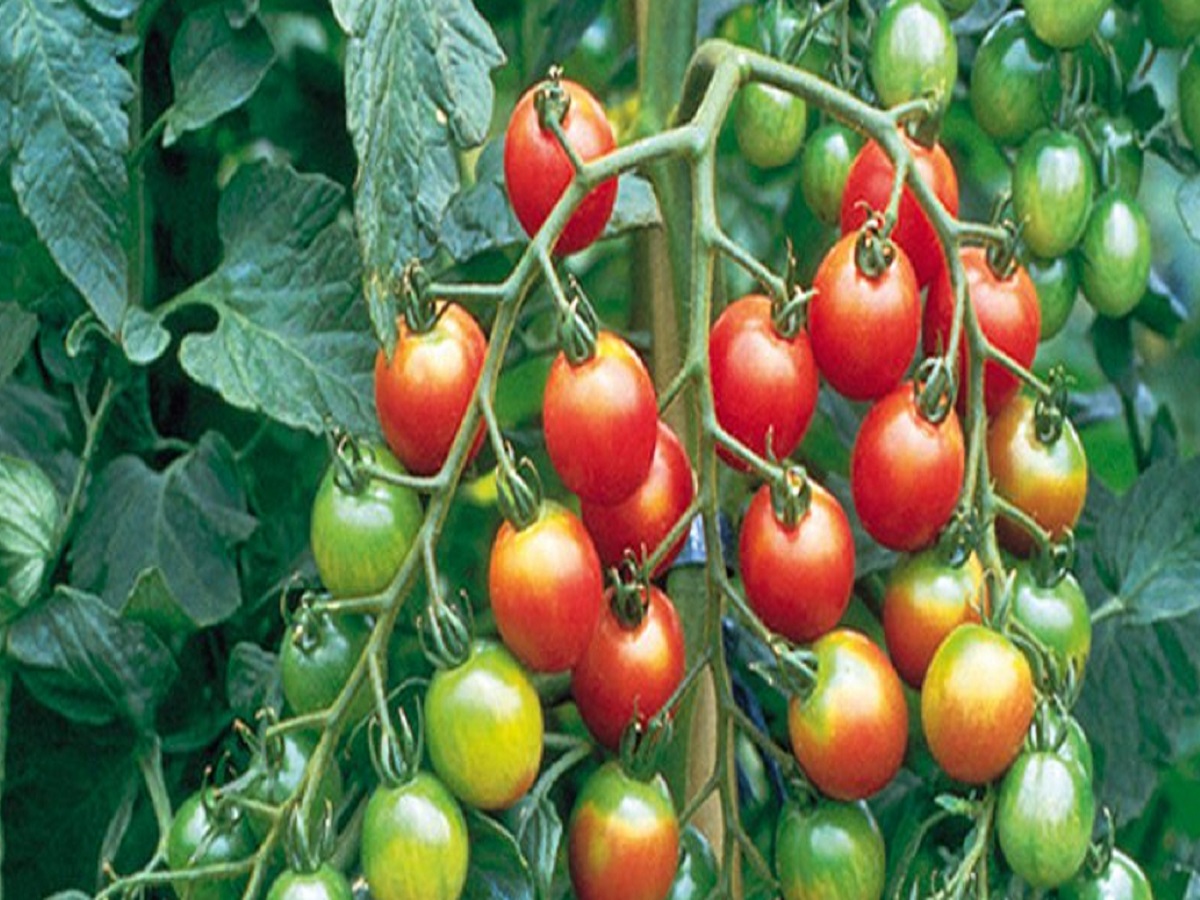Cherry tomato is believed to be a type of tomato with origin in Mexico. History has it that the cherry tomato is crossbreed of wild tomato and other form of garden tomato. Tomato is found in so many recipes around the world. Cherry tomato and other types of tomato are so widely used that it appears that homes and kitchens cannot do without them. Tomato is more grown in home gardens than any other food. But wait, what is your answer- is tomato a fruit or a vegetable? What are the health benefits of cherry tomato and other types of tomatoes? How best could tomato recipe be prepared? This article will give clear answers to these questions.

CHERRY TOMATO – IS THE TOMATO A FRUIT OR VEGETABLE?
Most people see tomato as a vegetable, since it’s often eaten in cause of other main meal. However, tomato is a berry containing seed and therefore a fruit.
Read also: BANANA CALORIES: HEALTH BENEFITS OF BANANA
CHERRY TOMATO: REMARKABLE VARIETY AND POPULARITY
Majority of us are used to the red-colored tomato. So, we think red is the only color for this precious fruit. Conversely, tomato varieties can be yellow, orange, pink, purple, brown, white, or green, and some are even striped. Not all tomatoes are round in shape. Some are flat or plum- or pear-shaped. Some species can be as small as a pea or as large as a man’s clenched fist.
Tomatoes are grown as far north as Iceland and as far south as New Zealand. Quantum producers of tomato are the United States and southern European countries. Cooler climates rely on greenhouse production, and arid regions grow the crop by hydroponic techniques—that is, in a nutrient solution without soil.
The tomato is a mortal favorite of the amateur gardener. Tomatoes are easy to grow, and a few plants provide enough tomatoes to feed a small family. Small space, can farm varieties specially formulated for patios and window boxes.
TOMATO: HISTORY
Tomato is believed to have originated from Mexico, where the Aztecs cultivated the tomato for food. History has it that in the early 16th century, returning Spanish conquistadores took it to Spain. The Nahuatl word tomatl was later called tomate. Shortly, Spanish enclaves in Italy, North Africa, and the Middle East were enjoying the new delicacy.
Down the 16th century the tomato got to northern Europe. Initially the Europe community thought tomato was poisonous. Therefore, tomato was planted for decorative garden shrub. Tomato is a member of the nightshade family. The leaves and stems that are toxic, the fruit was found to be purely harmless.
Italians called it pomodoro (golden apple), suggesting it was yellow in color. The English called it tomate and later tomato. Some people used the term “love apple” to describe tomato back then. Thus, from Europe the tomato made the long journey back across the Atlantic to North America. At North America, tomato became an important food.
CHERRY TOMATO AND OTHER TOMATO; HINTS AND HEALTH TIPS
Tomatoes are good for the following reasons:
- They contain vitamins A, C, and E, as well as potassium, calcium, and mineral salts.
- Researchers are discovering that they are also an excellent source of lycopene. Lycopene is a powerful antioxidant. Thus, tomato is capable of lowering the risk of certain illnesses, such as cancer and heart disease.
- Tomatoes are 93 to 95 percent water, and weight watchers will be glad to know that they are very low in calories.
CHERRY TOMATO: STORAGE AND PRESERVATION
Tomato storage means understanding the following:
- Cold temperatures impair the flavor of tomatoes, so do not store them in the refrigerator.
- To speed up the ripening process, you could set them on a sunlit windowsill.
- Room temperature in a bowl with a ripe tomato or banana or in a closed brown paper bag for a few days can also speed ripening.
TOMATO: DELICIOUSLY VERSATILE
When you buy tomatoes, what type will you choose? Each cook has his or her own tomato recipes, but here are a few suggestions you may want to try:
- The familiar red, classic variety is useful for salads, soups, and sauces.
- The tiny red, orange, or yellow cherry tomatoes, which are very sweet because they have high sugar content, are delightful eaten raw.
- If you are making a pizza or a pasta dish, maybe the oval-shaped plum tomato with its firm flesh would be a good choice.
- The large beefsteak tomato—called such because of its dense, beefy flesh—is ideal for stuffing or baking.
- The green tomato, sometimes with distinctive stripes, makes excellent relish.
- Prepare a quick and colorful appetizer by overlapping slices of tomato, mozzarella cheese, and avocado. Sprinkle with a dressing of olive oil and black pepper, and garnish with basil leaves.
- Make a Greek salad by combining chunks of tomato, cucumber, and feta cheese with black olives and sliced red onion. Season with salt and pepper, and serve with a dressing of olive oil and lemon juice.
- Create a Mexican salsa with freshly chopped tomato, onion, green chilies, and coriander, mixed together with a little lime juice.
- Produce a simple yet tasty tomato sauce for pasta by placing in a pan the contents of a can of chopped tomatoes, a pinch of sugar (or catsup), some olive oil, a minced garlic clove, and a few herbs such as basil, bay leaf, or oregano, and some seasoning. Bring the mixture to a boil, and then simmer it for about 20 minutes until the sauce thickens. Pour it over your cooked and drained pasta.
CONCLUSION
The versatile cherry tomato is just one example of the wonderful tomato varieties. Indeed, tomatoes add their distinctive flavor and color to a huge range of delicious vegetable, egg, pasta, meat, and fish dishes. If you cannot obtain fresh tomatoes, no doubt you will find many processed tomato products in your local store.

